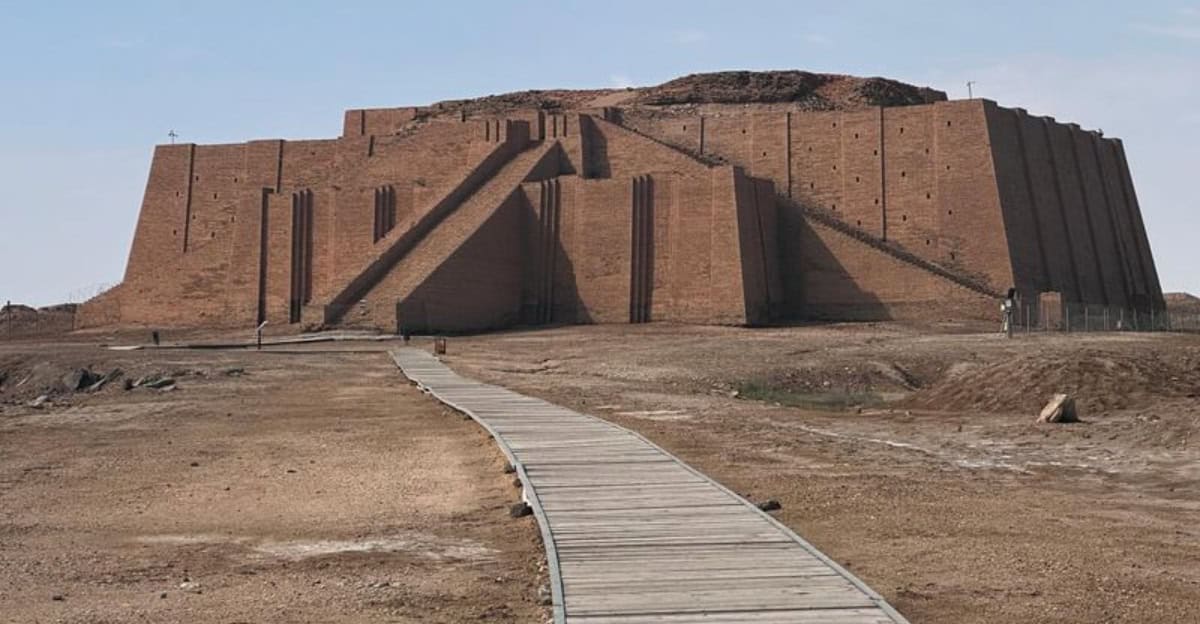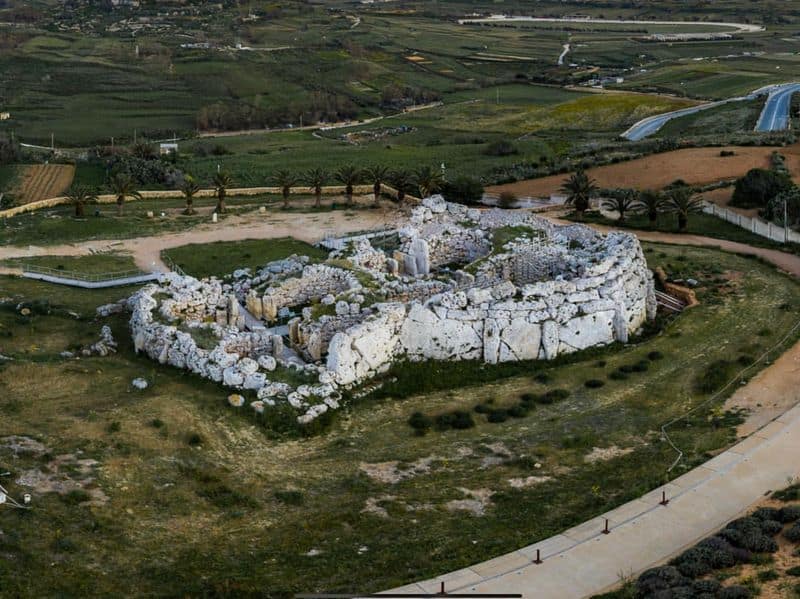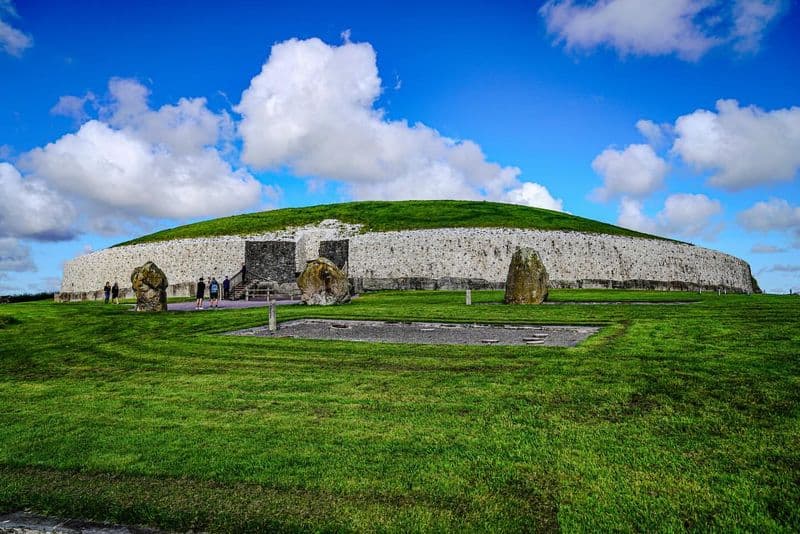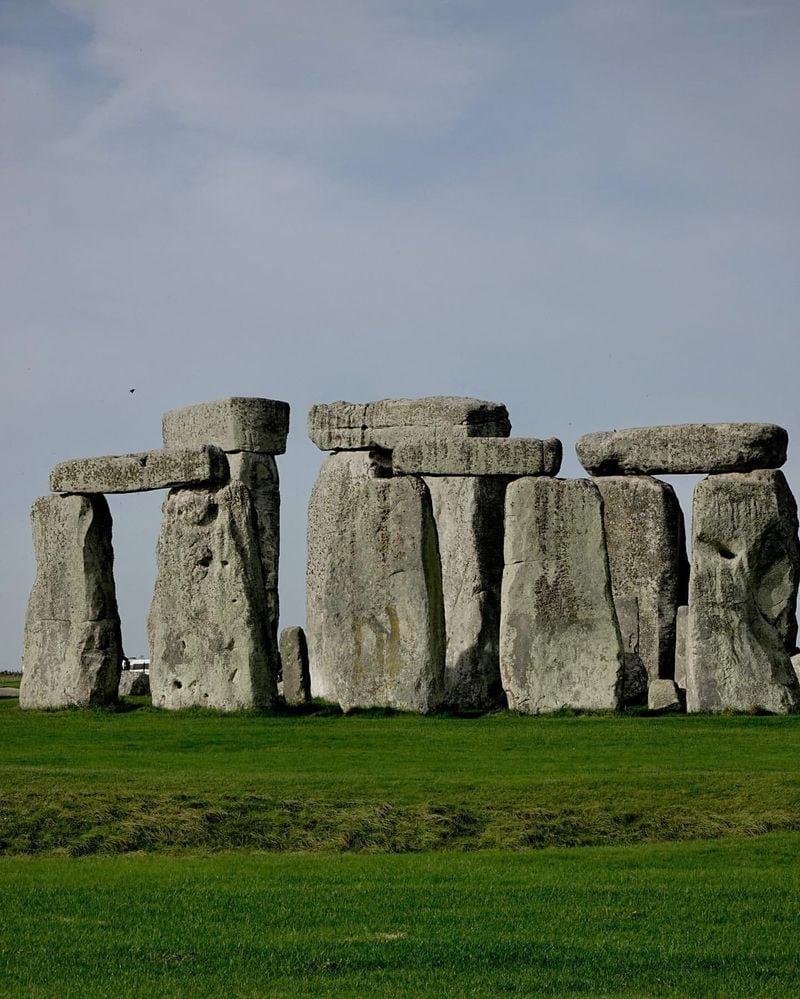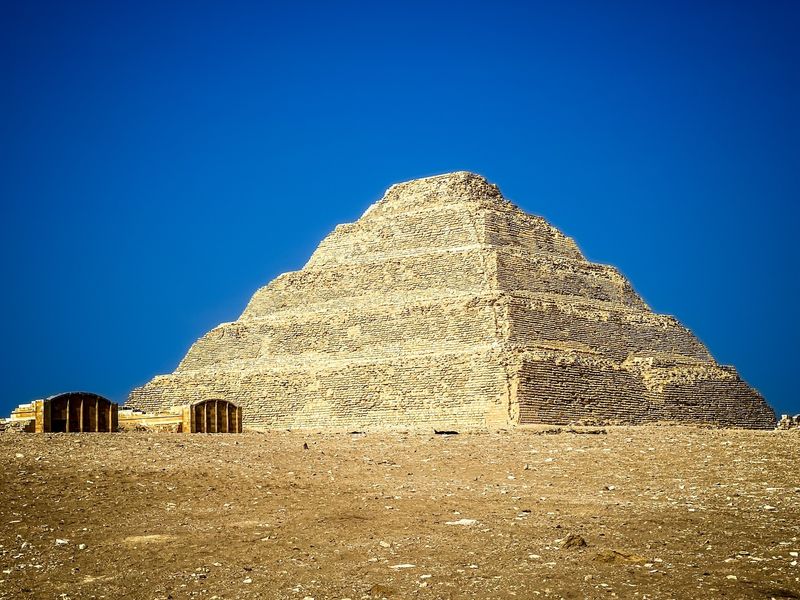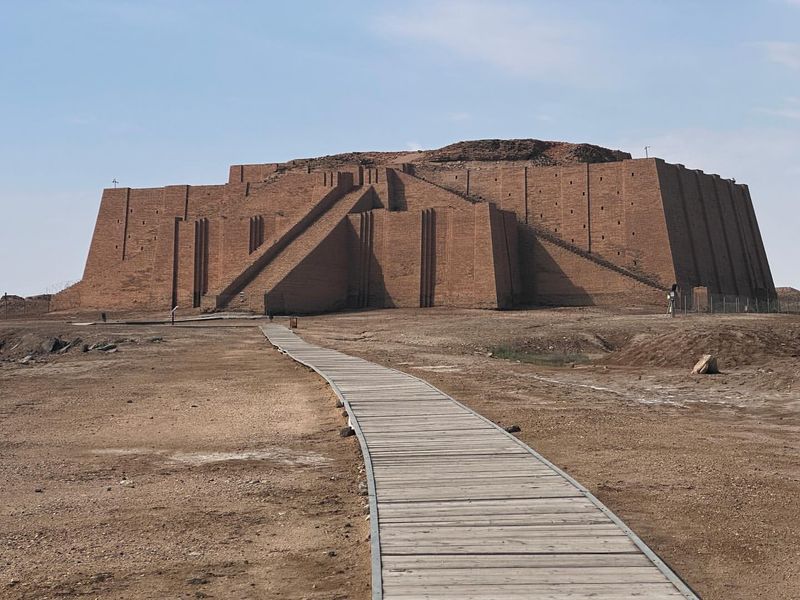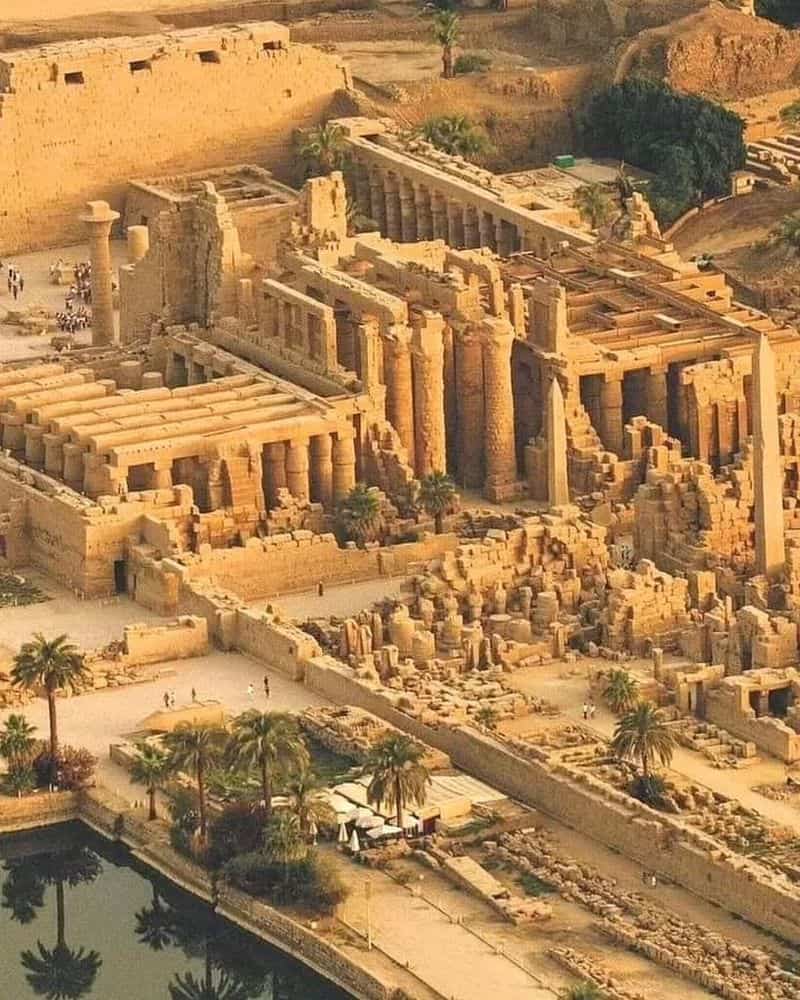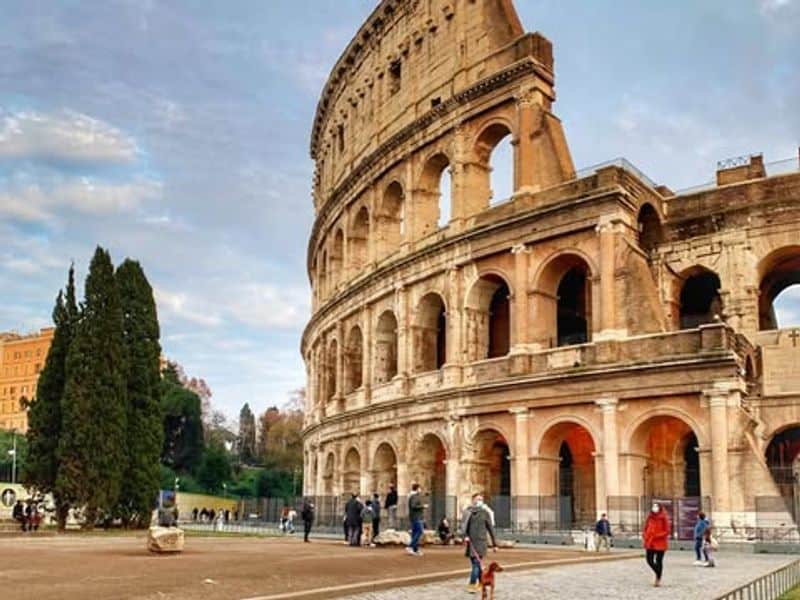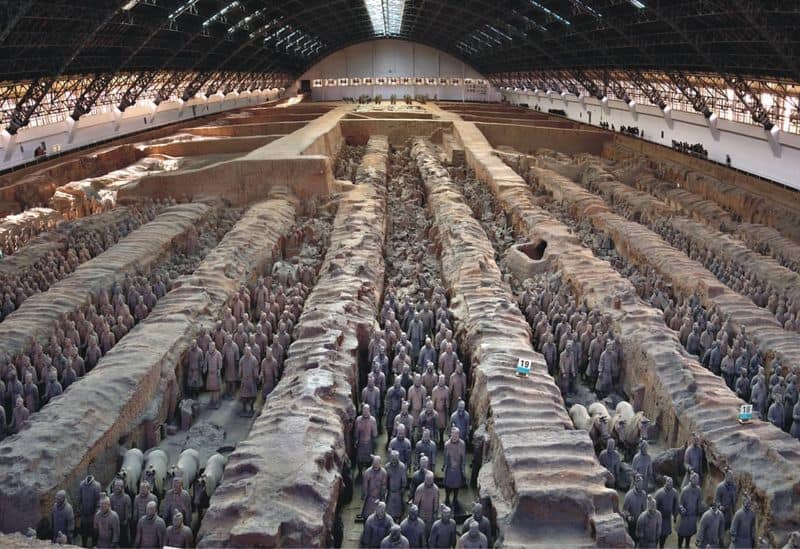Join us on an exploration of the world’s most enduring architectural wonders. These buildings have withstood the test of time, offering glimpses into ancient civilizations.
Each structure tells its own story, reflecting the ingenuity and culture of its creators.
From the mysterious stone formations of Stonehenge to the majestic pyramids of Egypt, these ancient edifices continue to captivate curiosity and admiration.
Discover the fascinating histories and architectural marvels of the 10 oldest buildings in the world.
Each one stands as a testament to humanity’s enduring legacy and the timeless allure of our architectural past.
1. Ggantija, Malta (c. 3700 BC)
Ggantija, located on the island of Gozo in Malta, dates back to around 3700 BC. These megalithic temples are amongst the oldest free-standing structures in the world.
Built by the prehistoric Maltese culture, Ggantija is renowned for its massive stone blocks, some weighing over 50 tons.
The builders used rudimentary tools and methods, yet achieved architectural sophistication. Today, Ggantija stands as a UNESCO World Heritage site, offering insights into ancient engineering.
Visitors can walk amid these ancient ruins, pondering the rituals and beliefs of a long-lost civilization. Its enduring presence is a testament to human creativity and resilience.
2. Newgrange, Ireland (c. 3200 BC)
Newgrange is a prehistoric monument in Ireland, dating to around 3200 BC. This Neolithic structure is best known for its impressive passage tomb and circular design.
Constructed with large stones and earth, Newgrange demonstrates advanced knowledge of astronomy.
During the winter solstice, sunlight illuminates the inner chamber, showcasing the builders’ astronomical precision.
Newgrange is a UNESCO World Heritage site and a symbol of Ireland’s ancient past. Visitors marvel at its engineering and spiritual significance.
Exploring Newgrange offers a glimpse into the sophisticated society that thrived over 5,000 years ago. It continues to captivate with its mystery and grandeur.
3. Stonehenge, Wiltshire, England (c. 3000 BC)
Stonehenge, situated in Wiltshire, England, dates back to around 3000 BC. This iconic stone circle has baffled historians and archaeologists for centuries.
Its precise purpose remains a mystery, though it’s believed to have been used for ceremonial or astronomical purposes.
The massive stones, some transported from afar, demonstrate remarkable engineering skills. Stonehenge is a UNESCO World Heritage site, attracting millions of visitors each year.
Standing amidst these ancient stones, one feels a profound connection to the past. Stonehenge remains a symbol of human curiosity and the enduring quest to understand our place in the universe.
4. Pyramid of Djoser, Egypt (c. 2660 BC)
The Pyramid of Djoser, constructed around 2660 BC in Saqqara, Egypt, is one of the earliest colossal stone buildings.
Designed by the architect Imhotep, this step pyramid served as a tomb for Pharaoh Djoser. Its innovative design marked a significant departure from traditional mastaba tombs.
The pyramid’s six-tiered structure symbolizes the evolution of architectural techniques in ancient Egypt. Today, it stands as a testament to the ingenuity of the ancient Egyptians.
Visitors to the site can explore the surrounding complex, gaining insights into the religious and cultural practices of the time. The Pyramid of Djoser remains a pioneering architectural achievement.
5. Pyramids of Giza, Egypt (c. 2560 – 2500 BC)
The Pyramids of Giza, built between 2560 and 2500 BC, are iconic symbols of ancient Egypt. These monumental structures were constructed as tombs for pharaohs, including the Great Pyramid of Khufu.
The pyramids’ precise construction methods continue to intrigue modern scholars. Their massive limestone blocks and alignment with celestial bodies highlight superior engineering skills.
As a UNESCO World Heritage site, the Pyramids of Giza attract visitors worldwide. Standing before these ancient wonders evokes awe and a deep appreciation for ancient Egyptian culture.
The pyramids remain a testament to human ambition and the eternal quest for immortality.
6. Ziggurat of Ur, Iraq (c. 2100 BC)
The Ziggurat of Ur, dating to around 2100 BC, is a remarkable example of ancient Mesopotamian architecture. Located in modern-day Iraq, this massive step pyramid served as a temple complex.
Built under the reign of King Ur-Nammu, the ziggurat was dedicated to the moon god Nanna. Its tiered design and mud-brick construction reflect the ingenuity of the Sumerians.
Visitors can explore the site and marvel at the architectural achievements of this ancient civilization. The Ziggurat of Ur stands as a testament to the religious and cultural significance of the region.
It continues to inspire awe and admiration for its creators.
7. Temples of Luxor & Karnak, Egypt (c. 2060 BC – 1085 BC)
The Temples of Luxor and Karnak, spanning from 2060 BC to 1085 BC, are monumental examples of ancient Egyptian architecture.
Located along the Nile River, these temples were dedicated to the gods Amun, Mut, and Khonsu. Their grand columns, statues, and intricate carvings showcase the artistic prowess of the ancient Egyptians.
Visitors can walk through the vast temple complexes, marveling at the engineering and spiritual significance.
As UNESCO World Heritage sites, they offer insights into the religious practices and cultural achievements of ancient Egypt.
These temples stand as enduring symbols of human devotion and artistic expression.
8. Parthenon, Athens, Greece (447–432 BC)
The Parthenon, constructed between 447 and 432 BC, is a symbol of ancient Greek civilization. Located on the Acropolis in Athens, this temple was dedicated to the goddess Athena.
Its Doric architecture and intricate sculptures exemplify the artistic achievements of the classical era. Visitors to the Parthenon can appreciate its historical and cultural significance, as well as its influence on Western architecture.
Despite damage over the centuries, it remains a testament to the enduring legacy of ancient Greece.
The Parthenon continues to inspire admiration and serves as a reminder of the artistic brilliance of its creators.
9. Colosseum, Rome (70–80 AD)
The Colosseum, built between 70 and 80 AD, is an iconic symbol of ancient Rome. This massive amphitheater hosted gladiatorial contests and public spectacles.
Its elliptical structure and innovative engineering techniques highlight Roman architectural prowess. The Colosseum could accommodate tens of thousands of spectators, reflecting the social and cultural dynamics of the time.
Today, it stands as a UNESCO World Heritage site and a testament to Roman ingenuity. Visitors can explore its corridors and imagine the vibrant events that once took place.
The Colosseum remains a captivating historical landmark, drawing millions of admirers each year.
10. Mausoleum of the First Qin Emperor, Xian, China (246 BC)
The Mausoleum of the First Qin Emperor, built around 246 BC near Xian, China, is renowned for its Terracotta Army. This vast burial complex was designed to accompany the emperor in the afterlife.
Discovered in 1974, the site contains thousands of life-sized terracotta soldiers, horses, and chariots. The mausoleum reflects the power and ambition of Emperor Qin Shi Huang.
Visitors can explore the excavation site and marvel at the craftsmanship and historical significance. The Terracotta Army continues to fascinate with its realism and scale.
It stands as a testament to the emperor’s enduring legacy and the artistic achievements of ancient China.

